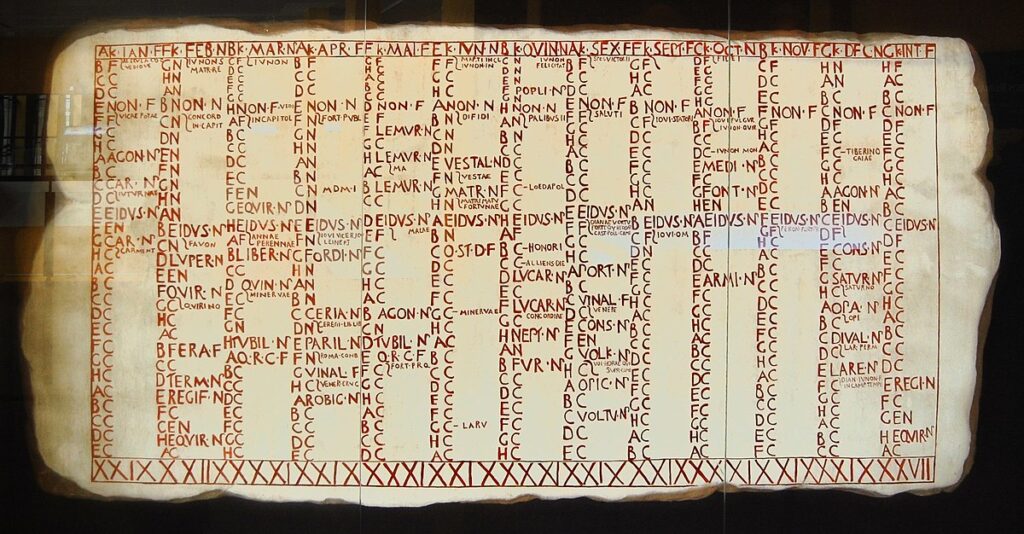Ever wondered why October, with its “oct-” prefix meaning eight, is the tenth month of the year? It seems like a cosmic joke or perhaps a clerical error that has managed to confuse many people. This quirky anomaly in our calendar system is a fascinating topic with a rich history. In this article, we’ll unravel the story behind the curious case of October’s placement and explore the historical twists and turns that led to this numerical peculiarity.

Introduction: A Calendar Conundrum
Imagine you’re a time traveler from ancient Rome, suddenly transported to modern-day America. As you flip through a calendar, you might scratch your head at the sight of October—the tenth month—despite its name suggesting it should be the eighth. How did this slip-up happen, and why has it persisted through centuries?
Do Video Games Really Make People Violent?
The answer lies in the evolution of our calendar system, a journey that spans millennia and reflects shifts in culture, politics, and astronomy. Let’s dive into the fascinating history of October and uncover why this month doesn’t quite align with its name.
The Origins of October
The Roman Calendar: An Early Perspective
To understand why October is the tenth month, we need to travel back to ancient Rome. The Roman calendar, established around 753 BC, originally had only ten months. The year began in March (Martius) and ended in December (December), with October positioned as the eighth month.
Booming Industries in 2024: A Deep Dive into Global Success
March to December: The First Roman Calendar
In the early Roman calendar, the months were structured as follows:
- Martius (March)
- Aprilis (April)
- Maius (May)
- Iunius (June)
- Quintilis (July)
- Sextilis (August)
- September (September)
- October (October)
- November (November)
- December (December)

The names of the months, from September to December, are derived from Latin numbers (septem, octo, novem, and decem) which straightforwardly indicate their position in the calendar year.
Discover More About The Roman Calendar
The Calendar Reforms: The Addition of January and February
As Rome grew and its calendar system evolved, the year was extended. Around 713 BC, King Numa Pompilius added January and February, shifting the year’s start to January 1st. This adjustment effectively moved October from the eighth to the tenth position. Although the name remained unchanged, the month’s numerical placement no longer matched its name.
The Julian Calendar: A New Era
In 45 BC, Julius Caesar introduced the Julian calendar, which refined the Roman calendar further and aligned it more closely with the solar year. This reform fixed the year at 365.25 days, adding a leap year every four years. October remained the tenth month, but the structure of the year had fundamentally changed.
Is Pulling Out Your External Storage Without Ejecting Harmful?
The Gregorian Calendar: The Modern System
The Shift from Julian to Gregorian
Fast forward to 1582, and we see another major shift with the introduction of the Gregorian calendar by Pope Gregory XIII. The Gregorian calendar adjusted the leap year system to better synchronize with the Earth’s orbit around the Sun. Despite these changes, the month names, including October, stayed the same, continuing their historical legacy.
Why the Name Stuck
The name “October” is derived from the Latin word “octo,” meaning eight. Despite its numerical shift, the name endured due to its historical and cultural significance. Changing the month names to reflect their new positions would have been a massive undertaking and likely seen as unnecessary, given the calendar’s overall consistency and the general public’s attachment to traditional names.
The Impact of Calendar Changes
Historical and Cultural Significance
The Roman calendar’s legacy is evident in many aspects of modern culture. For instance, our seven-day week and the names of the months retain their Latin roots, reflecting centuries of historical continuity. The month names not only mark time but also preserve historical and linguistic traditions.
The Hidden Math of Time: Unveiling the Base 60 System
The Continuity of Tradition
Even though the numeric sequence of the months doesn’t align with their names, the Gregorian calendar has proven to be a stable and effective system for managing time. The persistence of October’s name despite its placement is a testament to the way cultural traditions and historical precedents influence modern systems.
Understanding Calendar Evolution
Why Don’t We Rename the Months?
Renaming the months to fit their numerical position might seem like a logical step, but it would entail significant changes to historical records, cultural references, and everyday practices. The cost of such a transition would likely outweigh the benefits, making the preservation of traditional names more practical.
The Role of Tradition in Modern Calendars
Tradition plays a crucial role in the continuity of our calendar system. The names of the months, including October, are not just labels but are part of a long-standing historical narrative. Changing them could disrupt cultural heritage and practical applications, from historical documents to holiday celebrations.
Fun Facts About October
October’s Symbolism and Significance
October is rich with symbolism and significance. In many cultures, it’s associated with autumn, harvest festivals, and Halloween. The month is a time of transition, reflecting the change in seasons and the preparation for the winter ahead.
Why Do We Count in Base 10? Exploring the Origins and Advantages of Our Number System
October’s Birthstone and Zodiac
October is represented by the opal and tourmaline as birthstones, symbolizing creativity and emotional balance. The zodiac signs for October are Libra and Scorpio, adding another layer of significance to the month.
Conclusion: Embracing the Quirkiness of October
The quirky fact that October is the tenth month despite its name meaning “eight” is a fascinating historical anomaly. It reflects a complex journey of calendar evolution, cultural preservation, and historical continuity. While the mismatch between the name and the number might seem puzzling, it’s a testament to how history shapes our present.
Understanding this calendar conundrum gives us a deeper appreciation for the rich tapestry of human history and the ways in which tradition influences our lives. So, the next time you glance at the calendar and see October, remember: it’s not just a month; it’s a slice of history with a story that spans centuries.
FAQs
1. Why did the Roman calendar originally have only ten months?
The Roman calendar initially had ten months because it was based on a lunar year that began in March and ended in December. January and February were added later to align the calendar more closely with the solar year.
2. When did January and February get added to the calendar?
January and February were added around 713 BC by King Numa Pompilius, shifting the start of the year from March to January and changing the positions of the months.
3. How did the Julian calendar reform the Roman calendar?
The Julian calendar, introduced by Julius Caesar in 45 BC, established a 365.25-day year with a leap year every four years, improving the alignment with the solar year and stabilizing the calendar system.
4. Why did the Gregorian calendar not change the month names?
The Gregorian calendar, introduced in 1582, was designed to correct inaccuracies in the Julian calendar without altering month names. Changing the names would have been impractical and unnecessary.
5. What are some cultural associations with October?
October is associated with autumn, harvest festivals, Halloween, and various cultural traditions. It’s also linked with the zodiac signs Libra and Scorpio and the birthstones opal and tourmaline.
Rep Based Vs Time Based Workout: Which is More Effective



What an historical knowledge ,amazing Wow this world is full of mystery
ohh 😯 this in nice I just learn something today so October ( octo means eight) burh how did they later discover January and February
Amazing
Wow this world is full of mystery